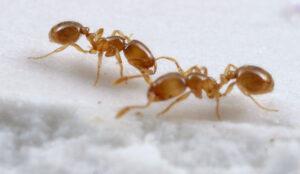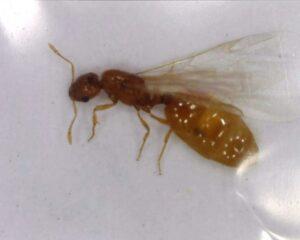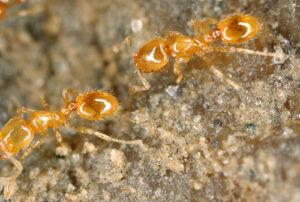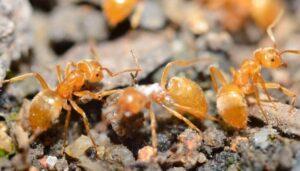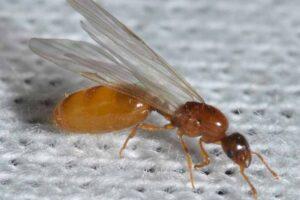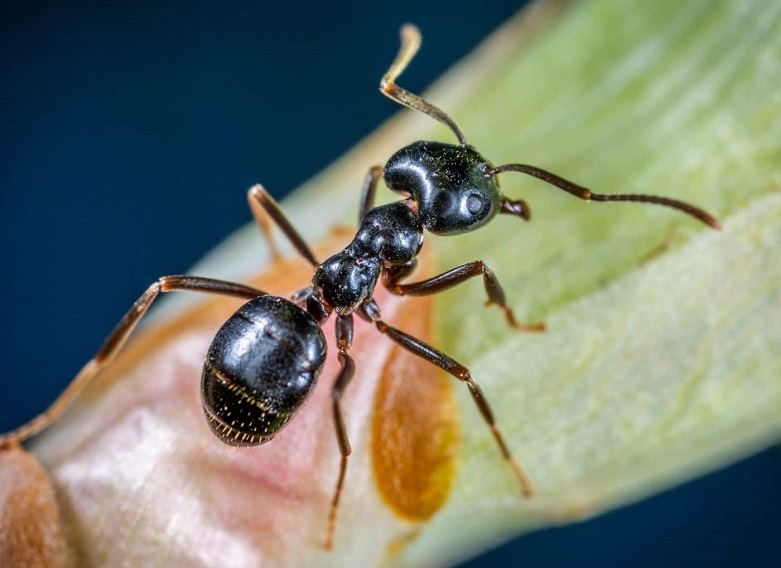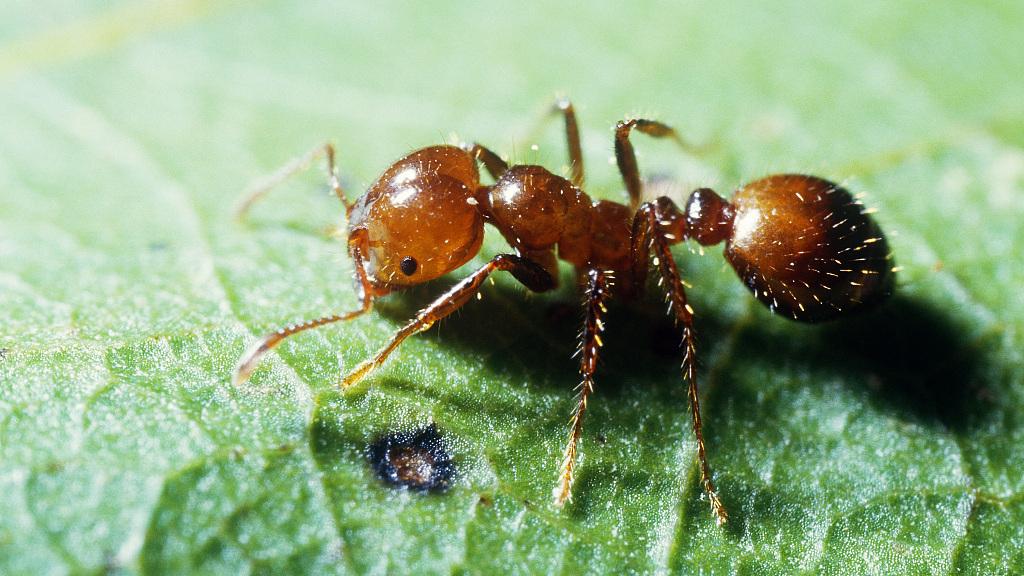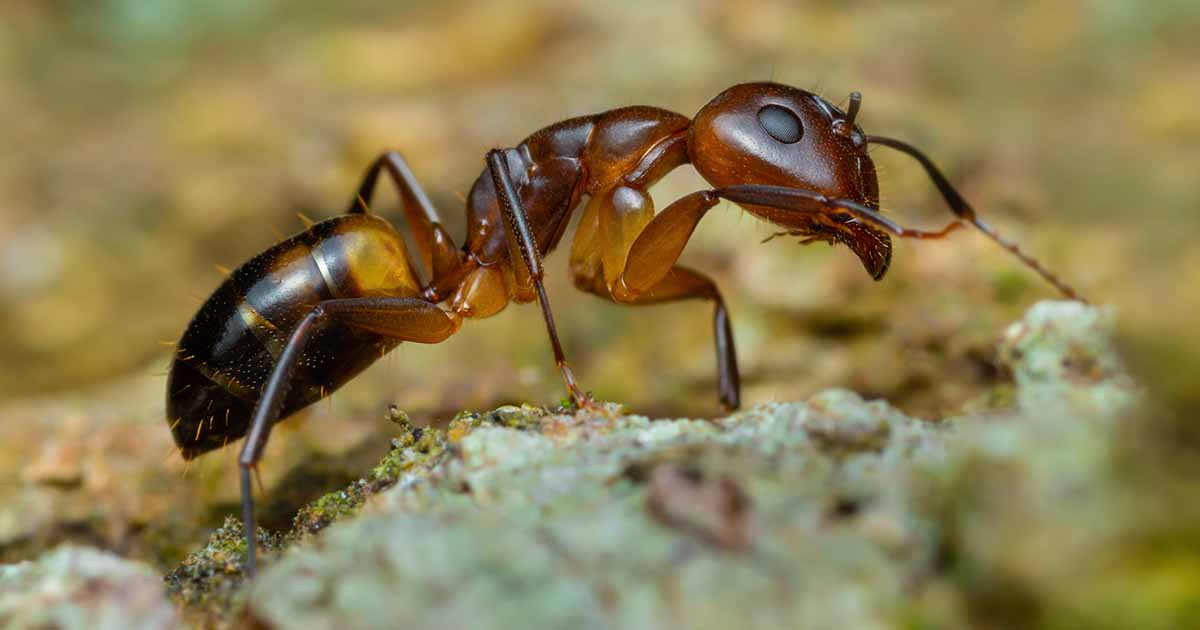Thief Ant (Solenopsis molesta)
Updated on
17/11/2022Thief ants are tiny ant species of the genus Solenopsis, native to most of the eastern United States. They get their unique name from their habit of building nests near other ant species and stealing their larvae and pupae as a source of food. They are attracted to sweets and grease, giving them their other name – grease ants.
Scientific Classification
- Class:Insecta
- Order:Hymenoptera
- Family:Formicidae
- Subfamily:Myrmicinae
- Tribe:Solenopsidini
- Genus:Solenopsis
- Species:S. molesta
Conservation Status
Description
The size of the worker thief ant varies from 1/32 to 1/8 inch (0.5 mm-3 mm). Drones are slightly bigger, being about 3.5mm. The queens are the largest in the colony, about 3/16 inch (5mm) in length.
They are all pale yellow, with the queen having a darker brown color on their head, prothorax (their first body segment), and in between their abdominal segments. These ants have a two-segmented petiole connecting their abdomen to the thorax.
The antennae consist of 10-11 segments, which end in large segmented clubs. They have tiny eyes covered with erect yellow hairs.
Both Drones and queens have two pairs of wings. The queen ant has glossy wings, which they lose after their mating ritual.
The worker ants carry and steal the broods of other ants’ colonies with the help of their large jaws.
Distribution: Eastern, Western, and Central parts of the U.S. and parts of northern Mexico.
Habitat: Indoors – inside wall and cabinet voids, behind baseboards. Outdoors – under rocks, inside rotting wood.
Do They Bite: No. Stingers are present, but they are rarely used effectively owing to their small size.
Lifespan: They live up to two months in captivity and up to a year in the wild.
Predators: Spiders, Texas horned lizards, skink species, and other species of ants like soldier ants.
Behavior and Characteristics
Diet and Foraging
Along with plant-based foods like – seeds and grains, the thief ants prey on various insects’ larva and eggs. They can co-exist with other ant species, which helps them to go about preying and stealing from other colonies via underground foraging. This process can occur throughout the day, preferably in the afternoon during the warmest temperatures.
Their small size makes it easy for them to slip into households through small cracks and infest areas near food storage.
Nest and Colony
Outdoors, these ants make their nests under protected sites like dead rotting wood, rocks, or undisturbed soil lumps. Their nests are interconnected to other ants’ nests to aid them in stealing dead insects and young larvae from other colonies.
Thief ant colonies consist of hundreds to thousands of workers and multiple queens. Though smaller than other ant colonies, their population increases exponentially around promising food sources. Queens lay hundreds of eggs that hatch after 16-28 days. Larval stages last up to 21 days, followed by the pupal stage, which takes about 13-27 days to metamorphize into a full-grown adult ant.
Mating and Flight
There is an adult winged phase when the queen and the drones fly. Mating occurs during this winged phase which usually happens during the summer months of July to September.
Post mating, when the males and females have separated, females move to a new colony, and males die shortly afterward. One or two worker bees cling to the body of the queen to accompany and help out the queen in building a colony.
Comparison With Similar Species
vs. Pharoah ants
The Pharoah ant (Monomorium pharaonis ) is larger (1/16inch). Their body color varies from a light yellow to a darker honey-brown tint. They also have different segmentation – twelve segmented antennae ending with a three-segmented club. The pharaoh ant lives in larger colonies that consist of 300,000 workers.
Getting Rid of Thief Ants
Contacting local pest control professionals who can identify the species correctly and recommend an appropriate treatment is the ideal solution to control these ant infestations. Proper sanitization and fixing of cracks in walls and household structures might decrease the chances of infestation significantly. Setting up baits in grease or protein-based foods and injecting insecticides into them will help terminate the ant colony.
Source
bioweb.uwlax.edu, foothillpest.com, bugwoodcloud.org, howtomurderpests.com, gardenerspath.com, 3.bp.blogspot.com




